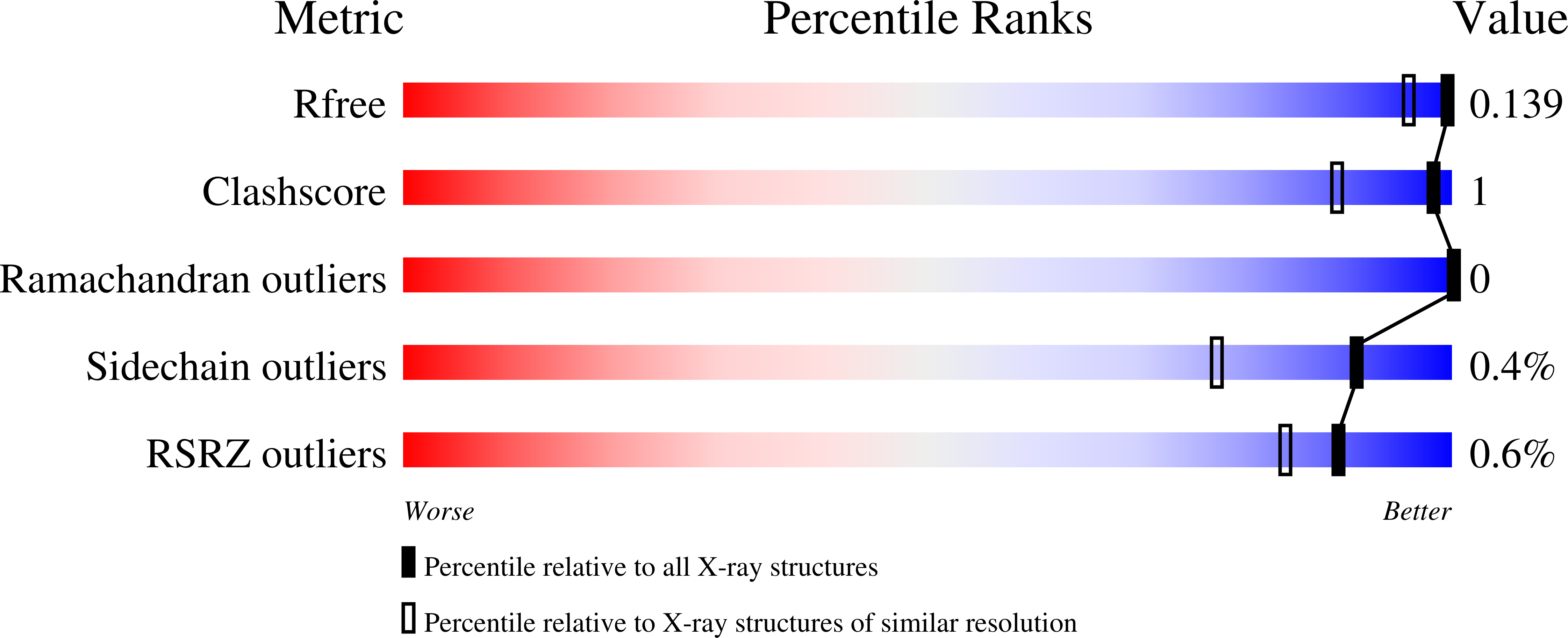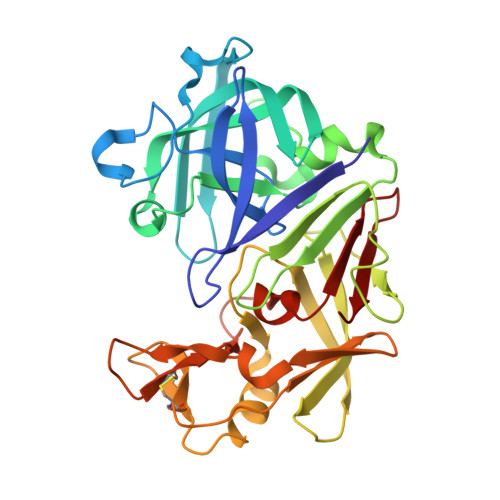Structure-based design of inhibitors of the aspartic protease endothiapepsin by exploiting dynamic combinatorial chemistry.
Mondal, M., Radeva, N., Koster, H., Park, A., Potamitis, C., Zervou, M., Klebe, G., Hirsch, A.K.(2014) Angew Chem Int Ed Engl 53: 3259-3263
- PubMed: 24532096
- DOI: https://doi.org/10.1002/anie.201309682
- Primary Citation of Related Structures:
4KUP, 4LBT, 4LHH - PubMed Abstract:
Structure-based design (SBD) can be used for the design and/or optimization of new inhibitors for a biological target. Whereas de novo SBD is rarely used, most reports on SBD are dealing with the optimization of an initial hit. Dynamic combinatorial chemistry (DCC) has emerged as a powerful strategy to identify bioactive ligands given that it enables the target to direct the synthesis of its strongest binder. We have designed a library of potential inhibitors (acylhydrazones) generated from five aldehydes and five hydrazides and used DCC to identify the best binder(s). After addition of the aspartic protease endothiapepsin, we characterized the protein-bound library member(s) by saturation-transfer difference NMR spectroscopy. Cocrystallization experiments validated the predicted binding mode of the two most potent inhibitors, thus demonstrating that the combination of de?novo SBD and DCC constitutes an efficient starting point for hit identification and optimization.
Organizational Affiliation:
Stratingh Institute for Chemistry, University of Groningen, Nijenborgh 7, 9747 AG Groningen (The Netherlands) http://www.rug.nl/research/bio-organic-chemistry/hirsch/

















